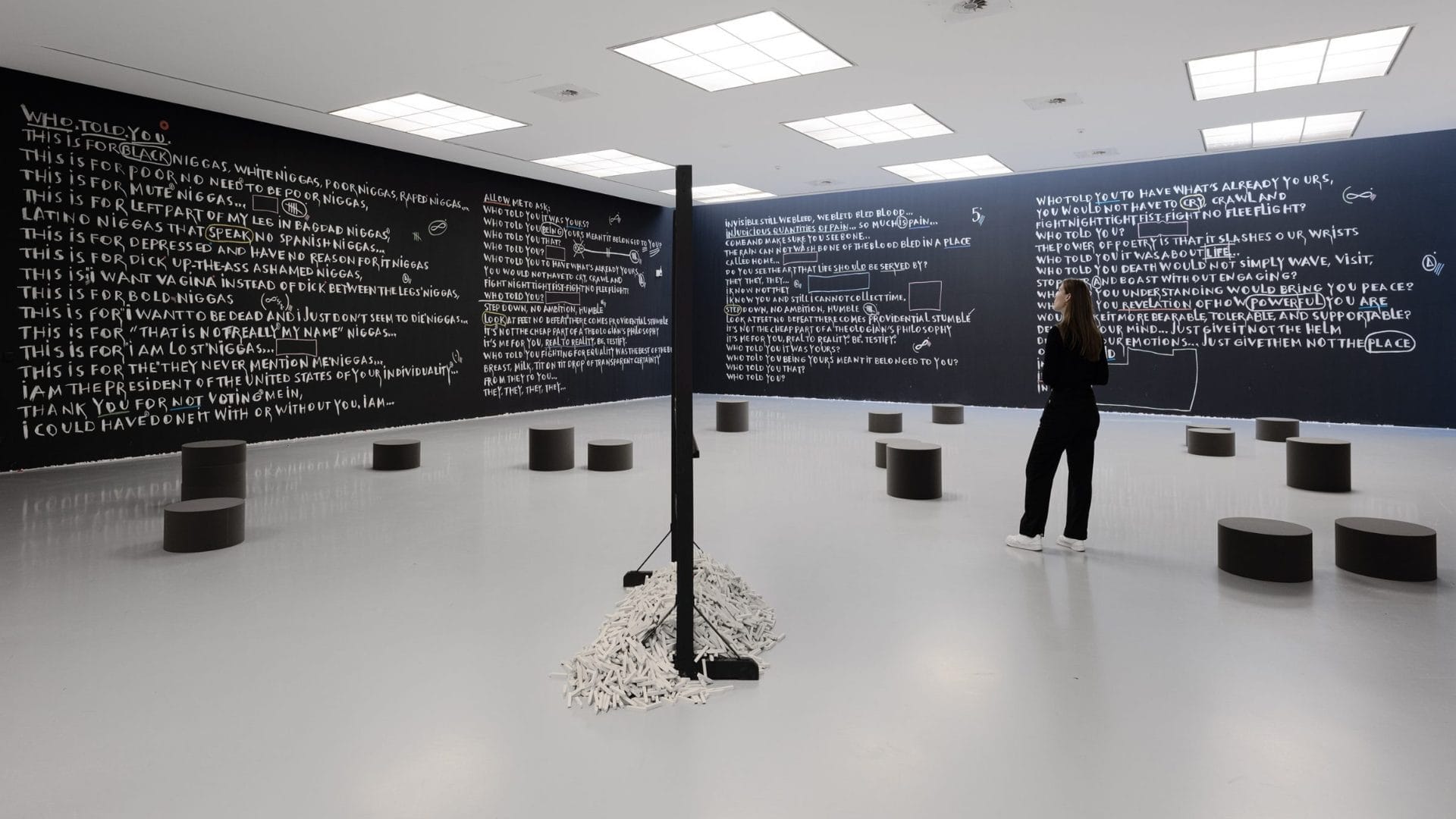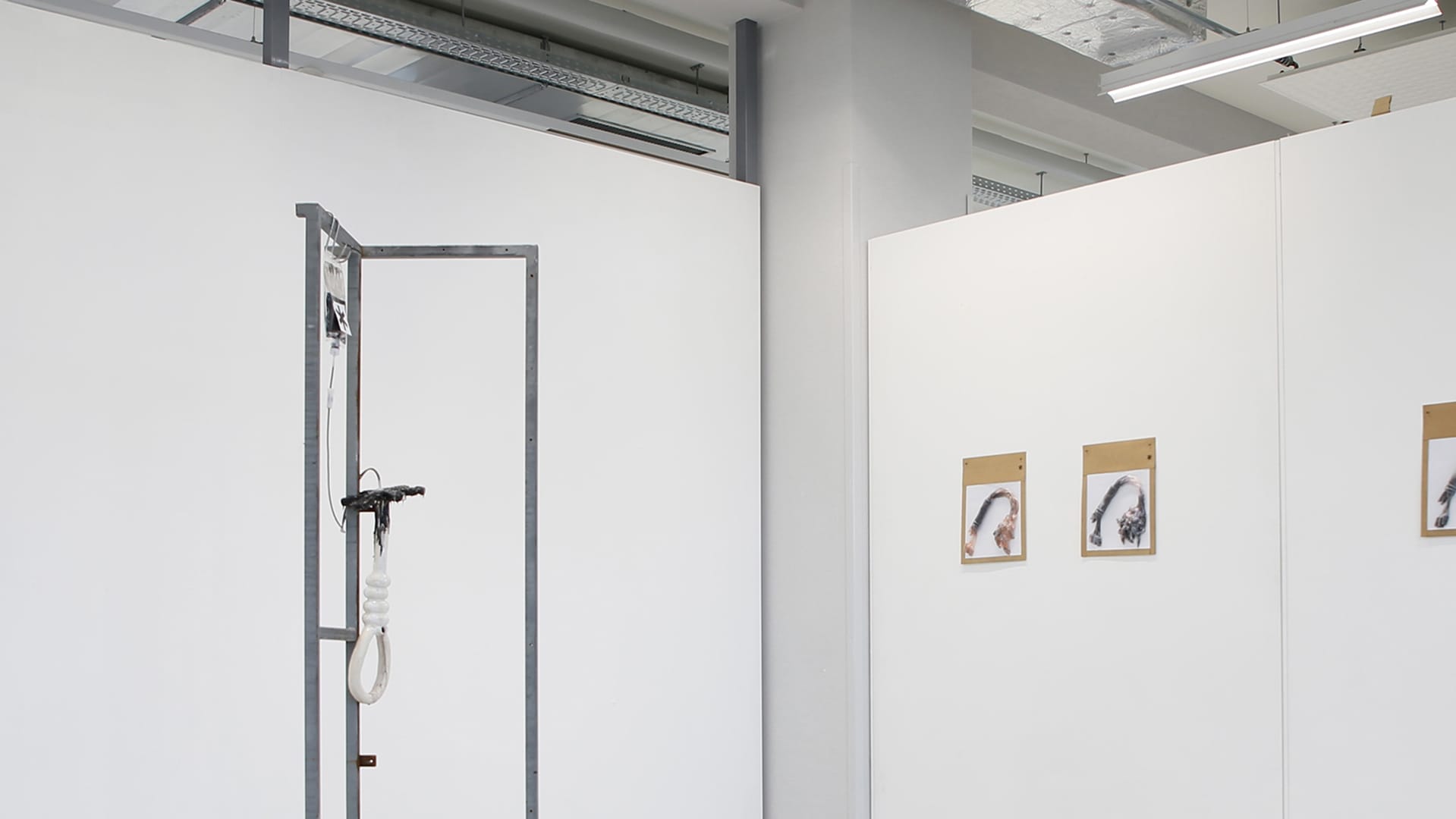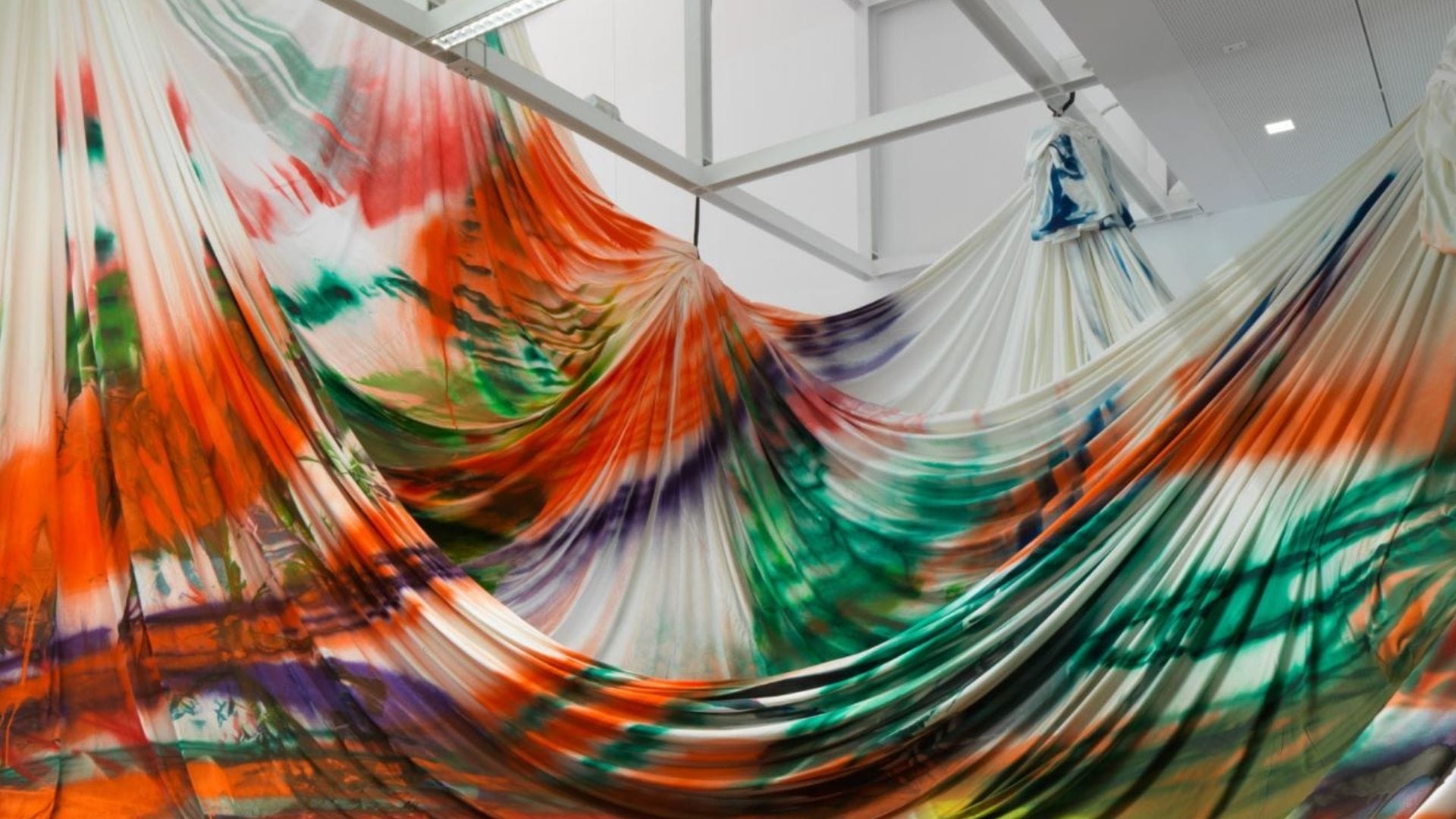
Painting as Environment: Katharina Grosse and the Phenomenology of Color
Painting Beyond the Canvas
Katharina Grosse is not a painter in the traditional sense. Her work challenges the very definition of painting, breaking free from the limitations of the canvas and extending onto walls, floors, objects, and even landscapes. Through her signature use of industrial spray guns, she turns entire environments into immersive fields of color, where the physical world dissolves into painterly abstraction. Her practice is not just about applying pigment but about transforming space, creating an altered reality where color dictates perception and movement.
Born in Freiburg, Germany, in 1961, Grosse studied at Kunstakademie Düsseldorf, where she later became a professor. Influenced by both Abstract Expressionism and Color Field painting, her work diverges from these traditions by rejecting the confines of a two-dimensional surface. Instead, she uses color as an agent of expansion, engaging directly with architectural structures and the natural world. Her compositions do not depict reality; they engulf and redefine it.
What makes Grosse’s work radical is her approach to painting as an event rather than a static image. By spraying color over pre-existing forms, walls, draped fabrics, discarded construction materials, and even trees, she obliterates the distinction between object and background. This technique allows her to work on an almost unlimited scale, where the physical dimensions of a site become inseparable from the act of painting itself.
From early on, her interest lay in the intersection of materiality and ephemerality. By working on large-scale surfaces, often temporary or destined for demolition, Grosse embraces impermanence. Many of her installations exist only for a short period before being removed or altered, reinforcing the idea that painting is not a fixed entity but a transient experience.
In this article, we will explore how Grosse expands painting into a spatial and sensory phenomenon, transforming environments into vivid, disruptive experiences. The next chapter will focus on how her work engages with architecture and the landscape, turning entire spaces into painterly interventions that challenge traditional notions of form and composition.

Expanding Painting: Space, Architecture, and Landscape
Katharina Grosse’s work is defined by its ability to break beyond traditional pictorial boundaries, treating architecture and landscape as extensions of the canvas. Unlike conventional painters who work within a framed surface, Grosse uses industrial spray guns to coat vast areas, walls, ceilings, floors, and even the ground itself, transforming entire environments into immersive, three-dimensional compositions.
One of the most striking aspects of her work is how it engages with existing structures rather than replacing them. Instead of treating walls and objects as neutral backdrops, she uses them as active participants in her compositions, merging architecture with color in ways that disrupt conventional spatial logic. Her installations do not simply decorate a space; they dissolve it, forcing viewers to navigate a world where surface, depth, and perspective are in constant flux.
A key example of this is “Untitled Trumpet” (2015), created for the Venice Biennale. This site-specific installation featured massive sculptural forms draped in fabric and covered in explosive fields of spray-painted color. The result was a space where painting, sculpture, and architecture merged into a single, all-encompassing experience. The installation’s scale and materiality made it impossible to observe from a single vantage point, compelling the audience to physically engage with the work, moving through it rather than merely looking at it.
Grosse also extends her practice into the natural world, turning landscapes into living paintings. In projects such as her 2018 intervention on a New Zealand beach or her large-scale works in public parks, she sprays color directly onto trees, rocks, and grass, making the environment itself part of the painting. These works exist in tension with their surroundings—vividly artificial yet deeply embedded in the natural world. Over time, they fade, erode, or disappear, reinforcing the idea of painting as an ephemeral and site-dependent act.
Her engagement with space is not merely aesthetic but also conceptual. By taking painting beyond the studio or museum, she questions where art begins and ends. The radical expansion of her medium forces viewers to reconsider their own position within the work, making them active participants rather than passive observers.
In the next chapter, we will explore how Grosse introduces elements of chance and material unpredictability into her process, creating dynamic compositions that embrace both order and chaos.


The Organized Chaos: The Role of Chance and Materiality
Katharina Grosse’s work thrives on unpredictability. Unlike traditional painters who maintain control over every brushstroke, she embraces chance, allowing color to spread freely across surfaces in ways that defy strict compositional order. Her use of an industrial spray gun, rather than a brush, amplifies this sense of improvisation. The physical distance between her body and the surface she paints creates an element of detachment, making each spray of color less about precise execution and more about fluid expansion.
This approach introduces a delicate balance between intention and randomness. While Grosse selects colors and determines the general scope of an installation, she cannot completely control how the paint interacts with a surface, especially when applied to irregular materials like draped fabrics, uneven walls, or natural landscapes. This unpredictability is not a limitation but a defining feature of her process. The way paint settles, bleeds, and overlaps generates forms that she could never fully anticipate, making each work a unique response to its specific site.
One of the most striking examples of this controlled chaos is “It Wasn’t Us” (2020), a monumental installation at Hamburger Bahnhof in Berlin. Here, Grosse transformed an entire exhibition hall, covering floors, walls, and even outdoor spaces with sweeping fields of color. The composition was not planned in advance but developed organically, responding to the architecture and evolving as she worked. The paint did not simply adhere to surfaces—it reshaped them, turning rigid structures into fluid, shifting environments.
Materiality also plays a crucial role in her practice. Grosse does not limit herself to painting static, smooth surfaces; she often introduces sculptural elements, including piles of soil, stacked objects, and crumpled fabrics, which she then paints over. This creates a sense of layering where the physical texture of the materials interacts with the color, producing unexpected visual and tactile effects. The act of covering three-dimensional forms with paint further dissolves the distinction between painting and sculpture, reinforcing the idea that color is not just an image but a material force in itself.
By embracing spontaneity, Grosse challenges the notion of painting as a controlled and finished product. Her works exist in a state of flux, resisting definitive interpretation and encouraging viewers to experience them from multiple perspectives.
In the next chapter, we will explore how these immersive environments alter perception and movement, transforming the act of viewing into a dynamic and participatory experience.
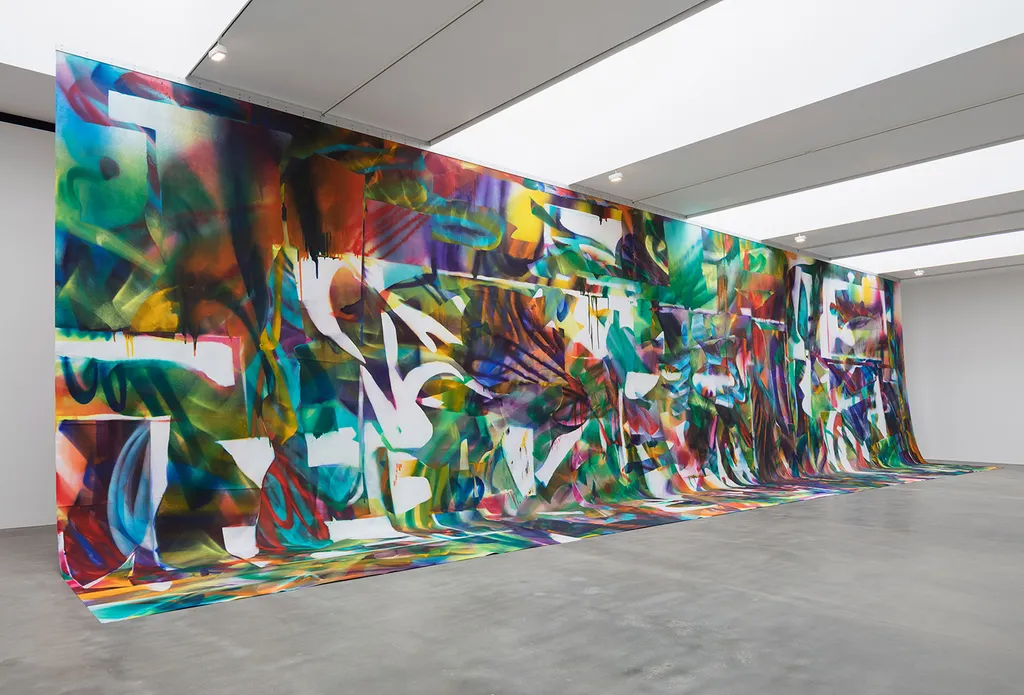
Perception, Movement, and Immersion
Katharina Grosse’s work is not meant to be observed from a distance. It demands movement, exploration, and an active engagement with space. By expanding painting beyond the flat surface and into the environment, she disrupts traditional modes of viewing, turning the act of perception into a physical and psychological experience.
Color in Grosse’s installations does not simply define objects or surfaces; it engulfs them, erasing distinctions between background and foreground, figure and ground. This creates a sense of spatial disorientation where conventional architectural boundaries dissolve. Viewers entering her painted environments often find themselves immersed in a world where floors, ceilings, and walls are no longer separate entities but part of a continuous, undulating field of color. This effect forces them to navigate space differently, questioning their own position within it.
One of the most immersive examples of this is “Rockaway!” (2016), a large-scale intervention on an abandoned military building in New York’s Fort Tilden. Grosse coated the decaying structure in vibrant reds, oranges, and whites, transforming its crumbling walls into a surreal landscape of color. The installation blurred the line between ruin and creation, inviting visitors to move through a space where architecture, history, and painting collided. The experience of walking through the site was not just visual but also tactile and atmospheric.
Another striking example is “In Seven Days Time” (2018), where Grosse painted large-scale draped fabric suspended within an architectural space. The hanging material disrupted the viewer’s line of sight, requiring them to weave through the installation, constantly shifting their perspective. Unlike traditional paintings, which have a fixed viewpoint, Grosse’s works force movement and multiplicity of vision, making perception an evolving process rather than a static encounter.
Her use of color also plays with depth perception. The layering of spray-painted pigments creates optical vibrations that challenge the viewer’s sense of distance and proximity. Some areas seem to recede into space, while others appear to surge forward, destabilizing the viewer’s ability to gauge scale and orientation. This dynamic effect further enhances the immersive quality of her work, making it impossible to experience from a single vantage point.
By turning painting into an all-encompassing, spatial experience, Grosse redefines the relationship between artwork and viewer. Her installations are not objects to be observed but environments to be entered, altered, and explored.
In the next and final chapter, we will examine her impact on contemporary art and how her radical expansion of painting continues to influence new generations of artists.
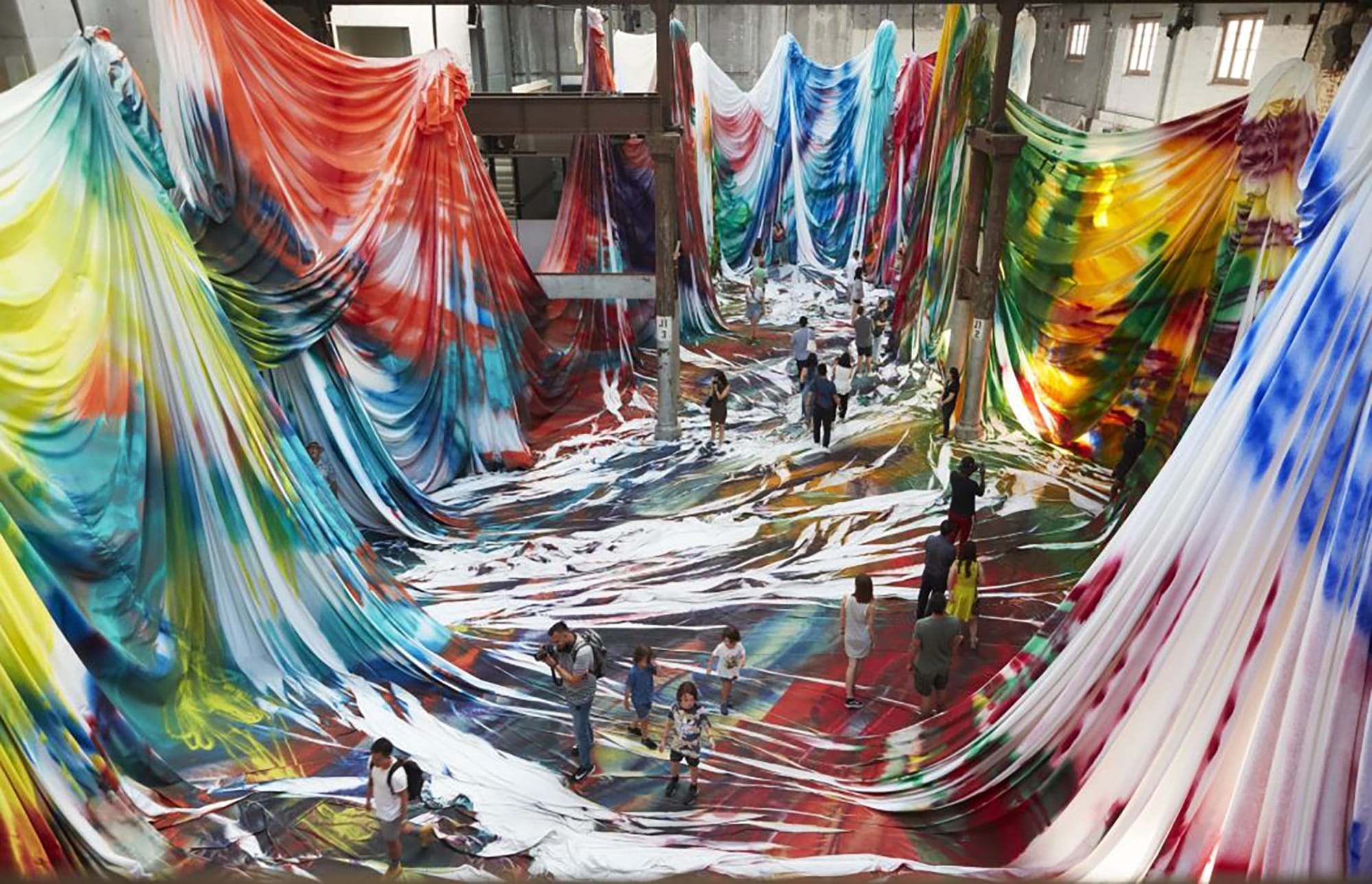
The Impact of Grosse on Contemporary Art
Katharina Grosse has fundamentally reshaped the perception of painting, expanding it into a multidimensional practice that merges with architecture, sculpture, and landscape. Her work challenges traditional boundaries, proving that painting is not confined to a canvas but can engulf entire environments, altering how we interact with space. By transforming the act of painting into a site-specific, immersive experience, she has opened new avenues for artistic experimentation, influencing both contemporary painters and installation artists.
One of her most significant contributions is the way she redefines the relationship between color and form. In her work, color is not secondary to structure but becomes an autonomous force that dictates spatial perception. This radical approach has positioned her as one of the leading figures in what could be called the “expanded field” of painting—where the medium is no longer limited to two dimensions but exists in direct dialogue with the built and natural environment.
Her influence can be seen in the increasing number of contemporary artists who integrate painting with architecture, breaking free from the confines of the gallery wall. Many of her site-specific interventions have set new standards for large-scale installations, particularly in the way they engage the public in an active, bodily experience of art. Unlike traditional paintings that are framed and static, Grosse’s works demand movement, interaction, and physical immersion, redefining what it means to “see” a painting.
Grosse’s impact is also visible in the growing discourse on the intersection between painting and digital aesthetics. While her process is entirely physical, the way her installations distort perception, blur boundaries, and alter spatial experiences resonates with contemporary discussions on virtuality and augmented reality. Her work raises important questions about how color and form can transform our understanding of space, whether in the physical world or in digital environments.
Beyond her artistic contributions, Grosse continues to challenge the conventions of exhibition-making. Her ability to transform both institutional and outdoor spaces has led to groundbreaking installations in major museums, biennials, and public sites worldwide. She has shown that painting can be ephemeral, transient, and site-responsive, reinforcing the idea that art does not need to be permanent to have a lasting impact.
Katharina Grosse’s work is a testament to the power of painting as an evolving, immersive, and boundless medium. By rejecting limitations and embracing the unpredictable, she has expanded not only the possibilities of her own practice but also the future of painting itself. Her legacy lies in her ability to redefine what art can be, pushing viewers to move beyond passive observation and into a world where color, space, and perception are in constant flux.
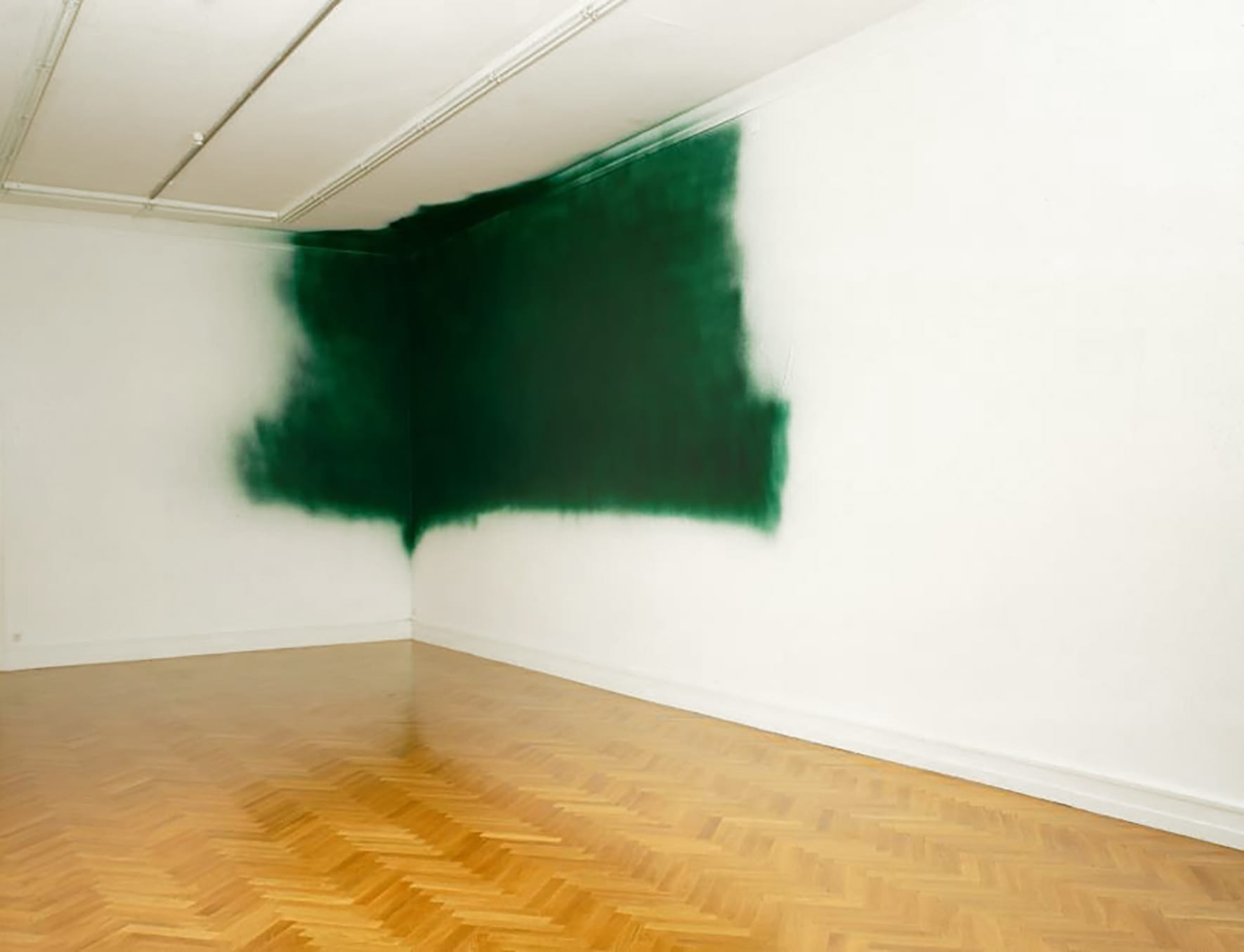
fakewhale
Founded in 2021, Fakewhale advocates the digital art market's evolution. Viewing NFT technology as a container for art, and leveraging the expansive scope of digital culture, Fakewhale strives to shape a new ecosystem in which art and technology become the starting point, rather than the final destination.
You may also like
Fakewhale presents SYNTHETIC PROGRAM on SuperRare
Launching exclusively on premier digital art platform SuperRare on November 27th, 2024, Fakewhale pr
Shattered Identities: Nástio Mosquito’s Carousel of Characters in King of Klowns
“What truly matters?” and “What are we willing to die for?” These provocative questions set
Weiyu Chen, “Restraned Desre, 2024,” at HEAD-Genève, Geneva.
“Restraned Desre, 2024” by Weiyu Chen, at HEAD-Genève, Geneva, 30/01/2024. Exhibition T


